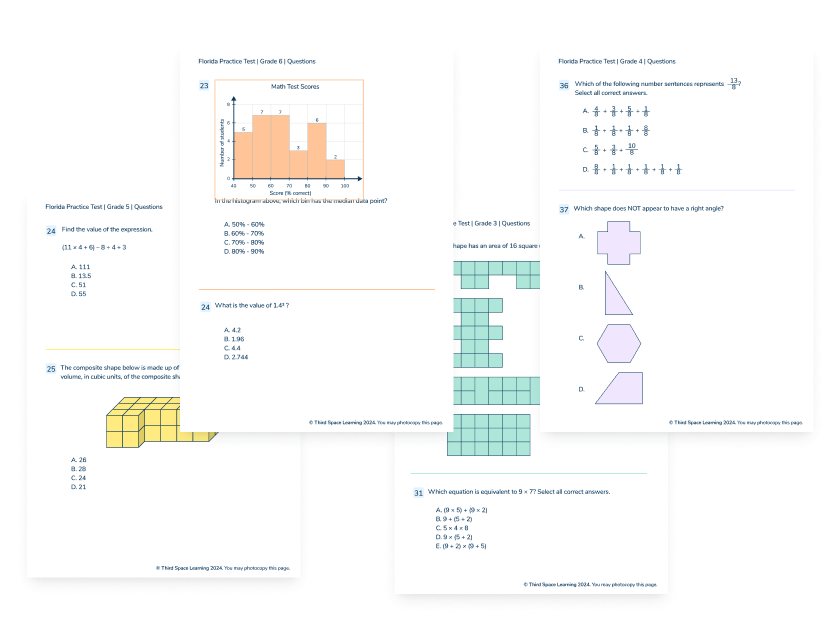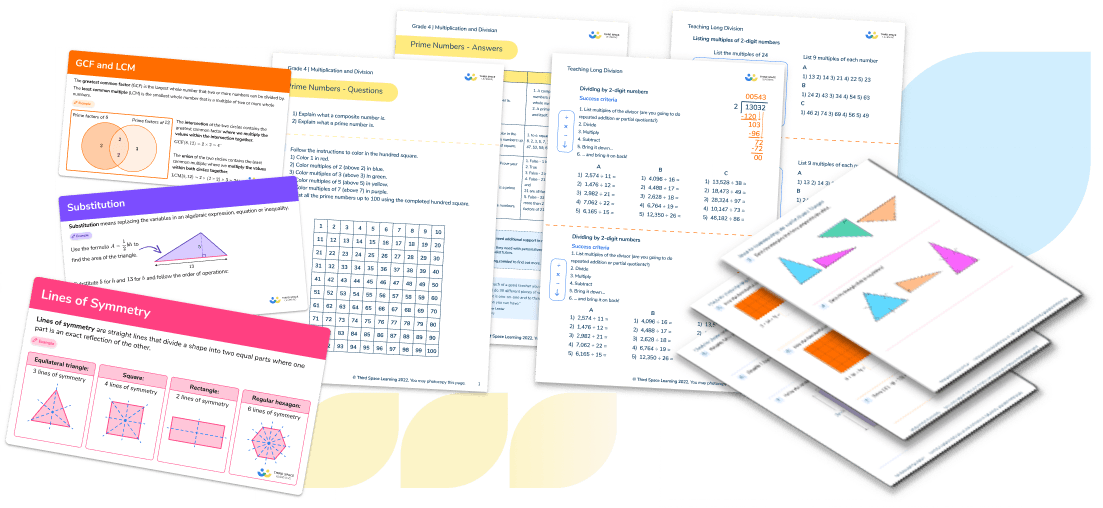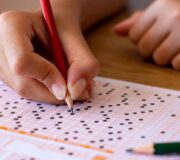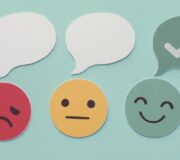Progress Monitoring: What It Is And How You Can Use It To Accelerate Math Achievement
Progress monitoring is key to improving students’ math knowledge. Teachers can deliver excellent instruction, but that doesn’t always mean students have understood or mastered the intended skill taught. Progress monitoring strategies can help bridge the gap between lessons and summative assessments and keep track of student progress.
This article provides an in-depth review of progress monitoring, how to make it part of your classroom routine and how to use the data effectively to ensure students are making progress.
- What is progress monitoring?
- How is progress monitoring different in math and reading?
- How is progress monitoring used for grading?
- Progress monitoring: best practice
- What does progress monitoring look like in Response to Intervention?
- How is progress monitoring used in special education?
- What tools can be used for progress monitoring?
- How do teachers use data for decision making?
- 4 tips for implementing progress monitoring successfully
- Make Progress Monitoring a Consistent Practice
What is progress monitoring?
Progress monitoring is a type of formative assessment, also known as assessment for learning, used to track students’ academic progress as they move through instruction or an intervention.
Data obtained from progress monitoring helps teachers determine students’ rate of improvement towards learning goals. They can also use results for data-based decision-making to influence instructional decisions.
Unlike formal summative assessments that check for understanding at the end of a topic, progress monitoring determines what knowledge a learner secures as they are learning new math skills.
Formative assessments such as progress monitoring can be used to:
- Track student progress,
- Decide which students and concepts should be retaught
- Monitor the effectiveness of specific teaching strategies
- Identify students who are not responding to intervention and need special education evaluation
How is progress monitoring different in math and reading?
Research supports the benefits of progress monitoring in math and reading, but the approach for each subject differs.
In reading, data collection focuses on understanding students’ core reading skills:
- Word reading
- Fluency
- Comprehension
While in mathematics, monitoring typically focuses on specific skills that were taught or need to be retaught, for example:
- Place value
- Completing operations
- Comparing fractions
- Solving multi-step word problems
3rd to 6th Grade Math test
Prepare for your state math test and track student progress with these 3rd-6th grade practice assessment for Common Core
Download Free Now!How is progress monitoring used for grading?
Typically, grading follows summative assessments; progress monitoring data is not used for grading. Instead, it focuses on how a student learns and progresses with specific skills.
This means students’ scores tend to be low at the start of the year and improve as the year progresses and students master content.
If this is not the case and a child struggles with learning mathematics, they may require a math intervention.
Progress monitoring: best practice
Student progress monitoring works most effectively if it is planned ahead of time and not carried out in an ad hoc manner. Having a routine can help with consistency:
Set a math skill to focus on
Decide which math skill you will focus on over the next few lessons. What progress monitoring data do you need to capture? What will your progress monitoring assessments look like? You may wish to use exit tickets or another type of formative assessment.
Schedule data collection
You may wish to assess student learning throughout the lesson with diagnostic assessments or at the end of each lesson. For progress monitoring to benefit a child’s progress, progress monitoring measures are frequently needed.
Analyze the data points
What does the data tell you about student performance? Are there any obvious student needs after each lesson? Regular data analysis can help you determine who is not making the expected rate of improvement and may benefit from an intervention or small group work.
For example, a student is learning multiplication up to the 5 times tables. After a week of learning, the student completes a quick test of 20 multiplication problems using multiplication up to the 5 times tables.
Data collection from this assessment helps the teacher gauge whether the student is mastering the skill or if they require additional instruction.
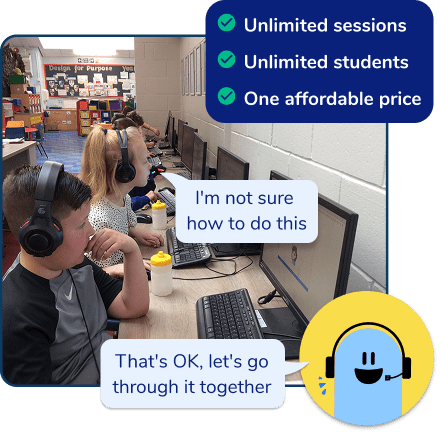
Meet Skye, the voice-based AI tutor making math success possible for every student.
Built by teachers and math experts, Skye uses the same pedagogy, curriculum and lesson structure as our traditional tutoring.
But, with more flexibility and a low cost, schools can scale online math tutoring to support every student who needs it.
Find out moreWhat does progress monitoring look like in Response to Intervention?
In the Response to Intervention (RTI) or Multi-Tiered Systems of Supports (MTSS) frameworks, progress monitoring is an important tool for Tier 2 intervention and Tier 3 intervention.
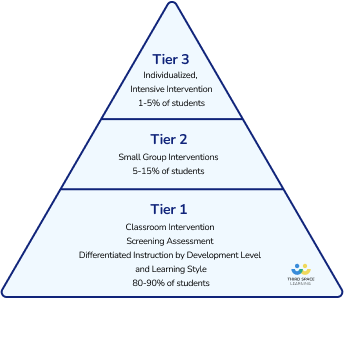
Tier 1
In Tier 1, teachers use universal screening to assess students’ academic performance and identify who require additional intervention. This might be a curriculum test or standardized assessment that that the entire class take.
Tier 2
Once students receive Tier 2 intervention, the teacher uses assessments to determine student outcomes.
If learners demonstrate a response to intervention or improved mastery they will exit Tier 2. If the student does not demonstrate a strong rate of improvement, they will receive more intensive intervention and individualized support, Tier 3.
For example, through universal screening, a teacher identifies a student struggling with math fluency. The teacher starts an intervention focusing on reteaching math facts to improve math fluency. In each lesson, the teacher used student assessment to track progress.
Tier 3
If students are not progressing in a Tier 2 intervention, they may need more intensive and individualized intervention.
Tier 3 interventions are usually most effective when they take place one-on-one. It is also easier to track the student’s progress and identify areas that need more individualized instruction.
How is progress monitoring used in special education?
Special education utilizes progress monitoring extensively. For students eligible for special education, data from Tier 2 and 3 interventions plays an important factor in determining the student’s disability.
To meet the special education criteria for a learning disability, students must demonstrate a lack of progress through progress monitoring in general education.
An Individualized Education Program (IEP) for students with learning disabilities sets goals and criteria for how they will be monitored. Special education teachers use assessments aligned with the student’s goals to track progress. Each school year, the teacher and IEP team assess student growth and update the IEP goals.
What tools can be used for progress monitoring?
Tolls for progress monitoring are the same across grades but the skills tested will change depending on the grade-level content.
Teachers can use a range of formative assessments to monitor student progress, including:
- Check for understanding quizzes
- Exit tickets
- Independent work or activities
- Curriculum based measurement
- Mastery measurement
Assessments should be brief (2-10 minutes) and come in multiple forms so the same skill can be assessed over multiple weeks.
Curriculum based measurement (CBM)
Curriculum based measurements (CBM) contain questions based on grade-level curriculum topics and track a student’s progression through a curriculum. CBM is highly supported by research that shows a correlation between these scores and students’ standardized test scores.
Curriculum based measurement tools:
- Only a few minutes to administer,
- Can be given to individual students or a whole class
- Include sample items or examples from the taught skills
- Are standardized for all students
- Produce results that show even small changes in student improvement
CBM is used to:
- Monitor progress in Tier 1 or Tier 2 intervention
- Determine if the current instruction is helping students master content
- Decide if individual students are making expected progress
- Identify if students are making adequate progress
- Make decisions about which students need additional instruction or intervention
- Predict how students will do on end-of-year assessments
- Check students are retaining previously mastered skills
- Communicate mastery of grade-level skills to parents.
Mastery Measurement
Mastery measurement tracks short term objectives, such as how students master specific skills within a unit.
Results from mastery measurement assessments:
- Give information about whether a student has mastered a specific skill
- Determine whether a particular teaching strategy was effective,
- Help teachers make decisions about whether to continue an intervention.
How do teachers use data for decision making?
After student assessment, teachers can make data-based decisions about future instruction and interventions and assess their effectiveness.
For example, each week a student may be tested on how many math facts assessment they get correct in 2 minutes.
If the student improves week on week, the teacher can be confident that the student is improving. But if the rate of improvement is unsatisfactory, the teacher can intervene with differentiated instruction or a response to intervention.
Teachers can use a graph to record student data in a clear, visual representation. Data should show a clear trend line that indicates if the student is making progress, or not.
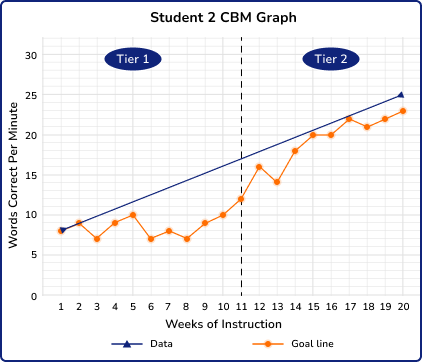
When reviewing student data, looking for improvement and score increases over time in key. If the student is demonstrating slow or no progress, the team they may require a more intensive intervention, such as a one-on-one intervention.
Third Space Learning provides personalized one-on-one math interventions for the students who need it most.
Highly trained AI math tutor Skye monitors student progress throughout every lesson to inform its instruction and lesson content.
At the end of every individualized one-on-one math tutoring lesson, reports are provided to teachers so they can see student progress and use the data to inform their class instruction.
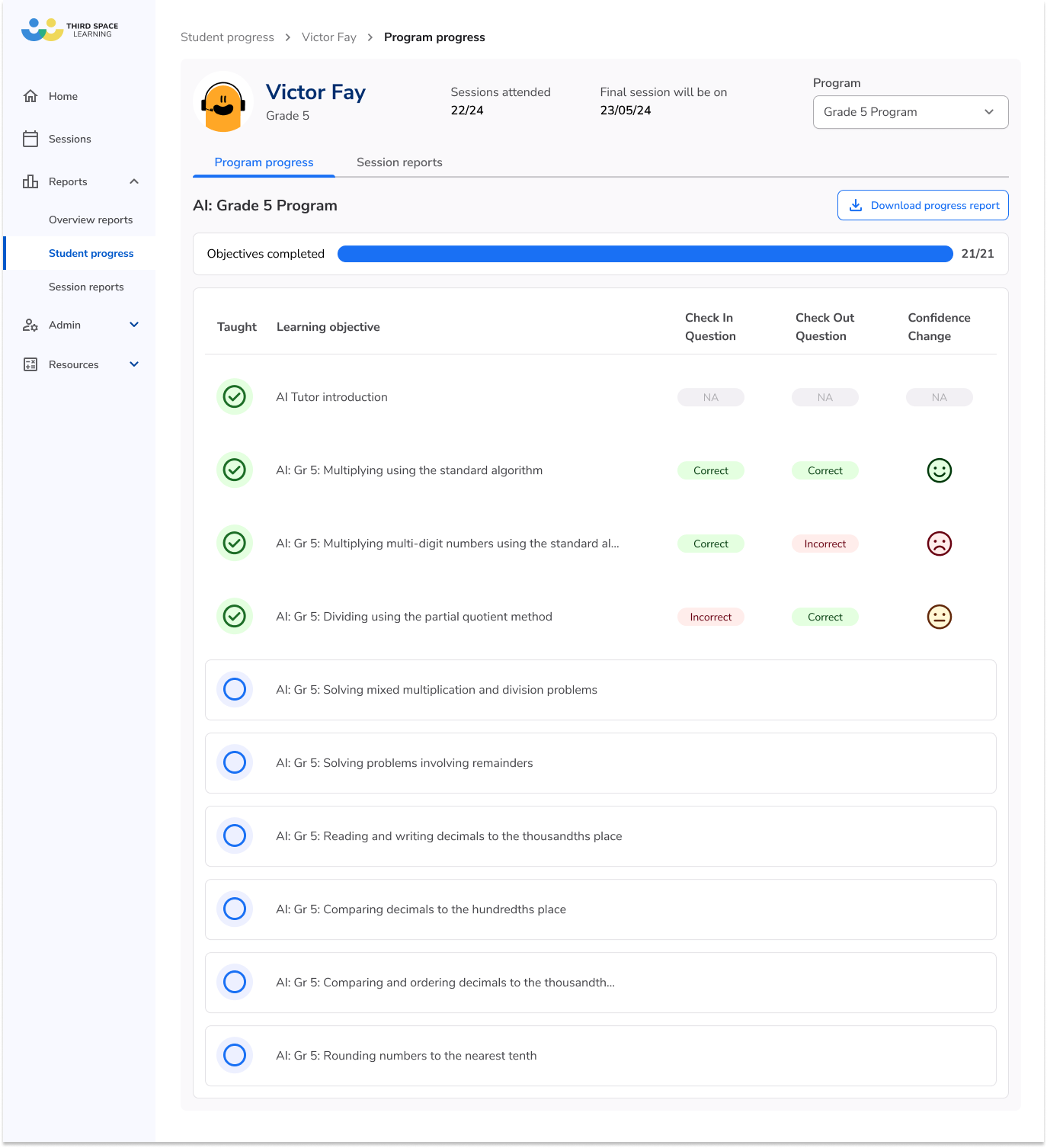
4 tips for implementing progress monitoring successfully
- Establish consistent progress monitoring procedures so you can compare one test to the next regularly.
- Schedule progress monitoring as part of standard intervention practice to ensure it happens in every session.
- Set time aside to review and engage in data-based decision making to maximise student progress.
- Share the data with students and ask them to reflect on how they are progressing, this creates accountability and can boost progress.
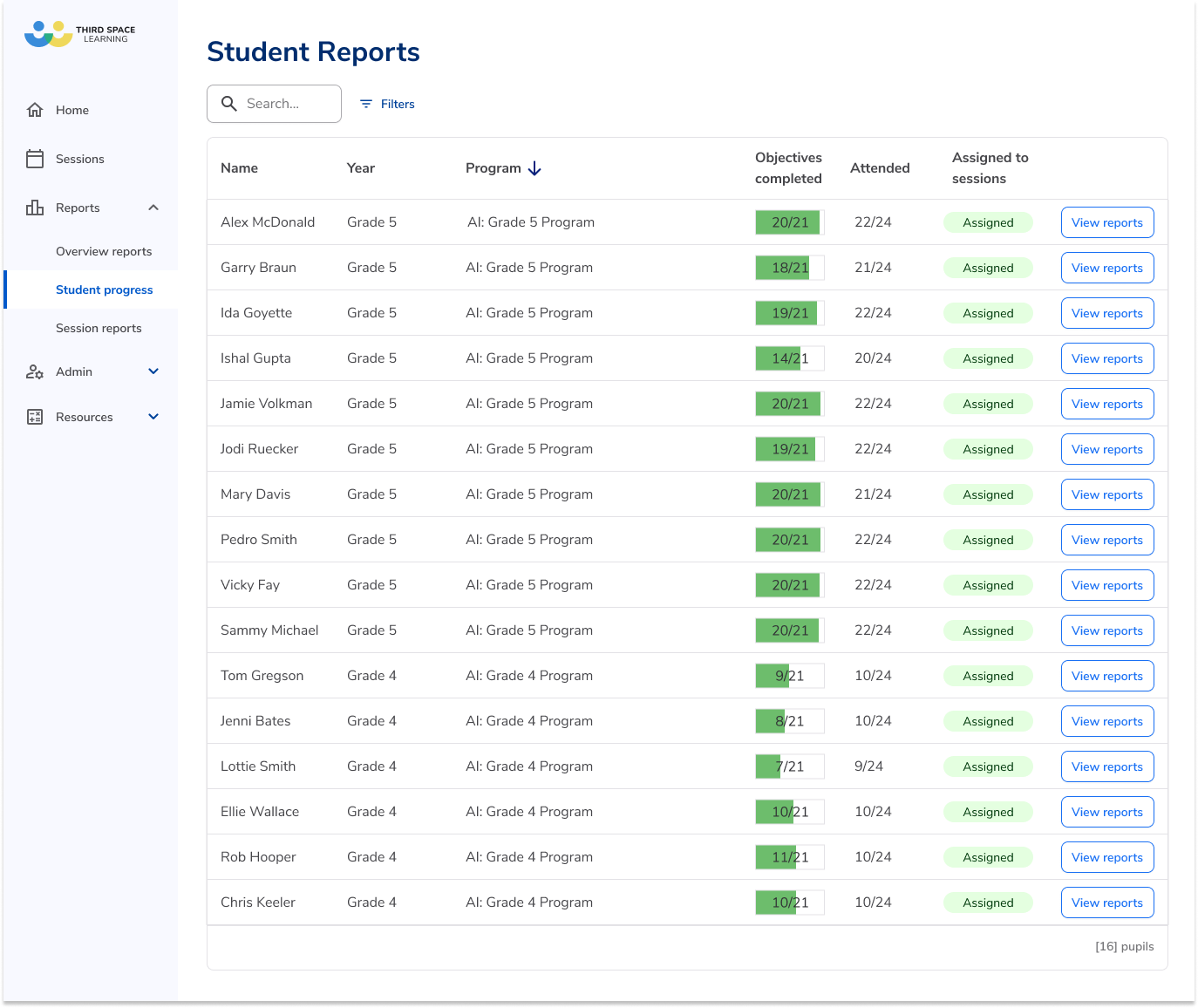
At Third Space Learning, we leverage data to inform our interventions to support student achievement. Our AI tutor customizes each student’s learning journey and addresses their specific gaps. This targeted, individualized support helps students build their confidence in math.
Teachers have access to on-demand, detailed reports about student learning so they can monitor progress any time.
Make progress monitoring a consistent practice
Progress monitoring supports teachers’ work with students and is especially important for students who are receiving interventions.
School leaders can ensure progress monitoring becomes a school-wide practice when by meeting regularly with class teachers and interventionists to engage in data-driven decision making. Reflecting on student engagement and data together helps identify when there needs to be a change to instruction or intervention adjustment.
When leaders and teachers collaboratively review and reflect on students’ academic performance, teachers can focus on the changes that have the greatest impact on students’ progress.
Do you have students who need extra support in math?
Skye—our AI math tutor built by experienced teachers—provides students with personalized one-on-one, spoken instruction that helps them master concepts, close skill gaps, and gain confidence.
Since 2013, we’ve delivered over 2 million hours of math lessons to more than 170,000 students, guiding them toward higher math achievement.
Discover how our AI math tutoring can boost student success, or see how our math programs can support your school’s goals:
– 3rd grade tutoring
– 4th grade tutoring
– 5th grade tutoring
– 6th grade tutoring
– 7th grade tutoring
– 8th grade tutoring
Progress monitoring FAQs
This practice provides a way for teachers to get information about how students are mastering content by providing regular assessments based on instruction or intervention skills taught. This practice is especially important for teachers as they make decisions about how to remediate student skills and provide intervention.
Teachers use the data to identify which students should receive Tier 2 intervention, how well students are progressing in Tier 2, and which students should be moved into Tier 3 or referred for a special education evaluation.
Teachers use curriculum based measures in Tier 1 and 2 to monitor mastery of general skills that are taught across the curriculum, and mastery measures in Tier 2 and 3 to see how students are mastering specific skills.
Good tool aligns with what the student has been or will be taught. It should be implemented within a short period (2-10 minutes) and should have multiple forms so that the same skills can be tested and compared over time. Teachers can get tools from their curriculum, intervention, or they can make their own, as long as the data provides the information that teachers need to make informed decisions.
